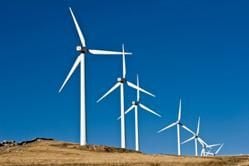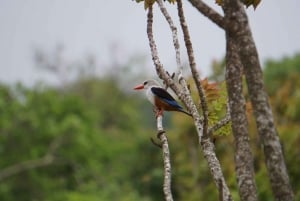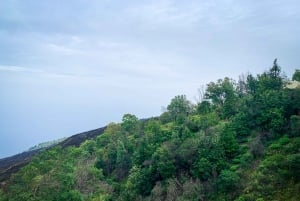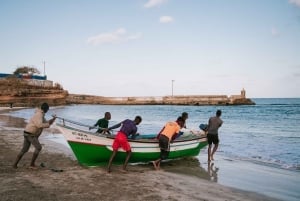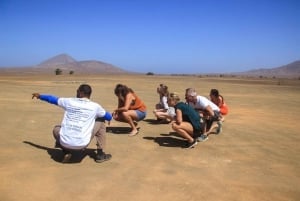Cape Verde Natural Resources
Natural Resources
Cape Verde's Success Story
Some African countries are abundant in natural resources, including fuels, precious gems and valuable metals, some are much more bountiful than Cape Verde in terms of agriculture. However, the archipelago is a model country in the continent. Political stability combined with a transparent and intelligent management of foreign aid have helped Cape Verde develop far beyond its African neighbours.
Nature has endowed Cape Verde with salt, basalt rock, pozzuolana (a component of hydraulic cement), limestone, kaolin and, of course, fish. With scarce rains, frequent draughts and only 11% of arable land, Cape Verde has to be very smart in its conservation of natural resources.
According to the US Bureau of African affairs, only 4 out of the 10 main islands (Santiago, Santo Antao, Fogo, and Brava) boast a significant agricultural production, and Cape Verde imports more than 90% of the food consumed in the country.
Cape Verde is therefore a perfect candidate to adopt green practices and convert to all-green energy sources. There are currently numerous on-going projects being developed within this sector.
Precious water
In Cape Verde, people receive water from the local government by truck. Women wait in line with buckets, and there is a certain allowance as to how many buckets one can buy. The water is obtained by the desalination of ocean water or from scarce underground sources. As fresh water resources are extremely limited, pumps are frequently closed down, and there are strict regulations about how much groundwater can be taken.
In fact, Cape Verdians have to be very smart about not wasting water, and tourists are instructed do the same. In a story used as part of the Peace Corps educational material Brandon Lundy explains:
"I have discovered how to wash large loads of laundry effectively in less than 15 liters of water. My entire morning shower takes less than one bucket of cold water, and washing dishes takes less than two liters. I've also discovered that used shower water makes great mop water"
Green Energy
Cape Verde is modernizing its energy sources at a very fast pace. In August of this year (2011), a massive wind farm plant will start operation, which will bump up Cape Verde's renewable energy use up to a significant 25%. Here is a link to a video explaining green energy on the Cape Verde Islands.
The 10 MW-capacity plant, co-funded with international corporations and the African Development and European Investment Banks, will power the town of Praia, the Cape Verde capital, and authorities maintain that it will generate 110 Giga Watts per year. The same project includes the creation of 3 other similar wind farms across the archipelago.
With about 350 days of sunshine in the year, Cape Verde is also starting to profit from solar energy. Martifer Solar, a company which is jointly owned by multinational Martifer SGPS and the Cape Verde government, has built two giant solar parks, one in Santiago, near the capital, and the other one in Sal island. Using cutting edge PV panels produced in Portugal, the Santiago plant (the biggest of its kind in Africa) has an estimated production of 8,120 Mwh/year. The power of both plants combined can generate up to 4% of the country's electricity.
Renewable Energy Centre
Inaugurated in Santiago in July 2010, the Center for Renewable Energy and Energy Efficiency is developing renewable energy and energy efficiency markets not only in Cape Verde, but across all of West Africa. The centre which was funded by the U.N. Industrial Development Organization and the Austrian, Cape Verdean and Spainish governments, is an important cornerstone of Cape Verde's energy policies and capacities. It was built in the belief that investment on the switch to renewable energy can be one of the keys to the region's further development.
The China Connection
For a country with Cape Verde's water shortage issues, the building of dams is essential. Currently, two dams are being built by the Chinese government in Cape Verde. China has always had excellent diplomatic relations with Cape Verde, but interest on investing in the area only began during the 1990s. It started out with small business owners moving to Cape Verde, but larger capitals followed later. Today, China is funding the construction of the national parliament, a government palace, as well as the national stadium, library and auditorium. It is also providing a number of vessels to connect the different islands and offering 100 scholarships for Cape Verdian students, among other projects.


